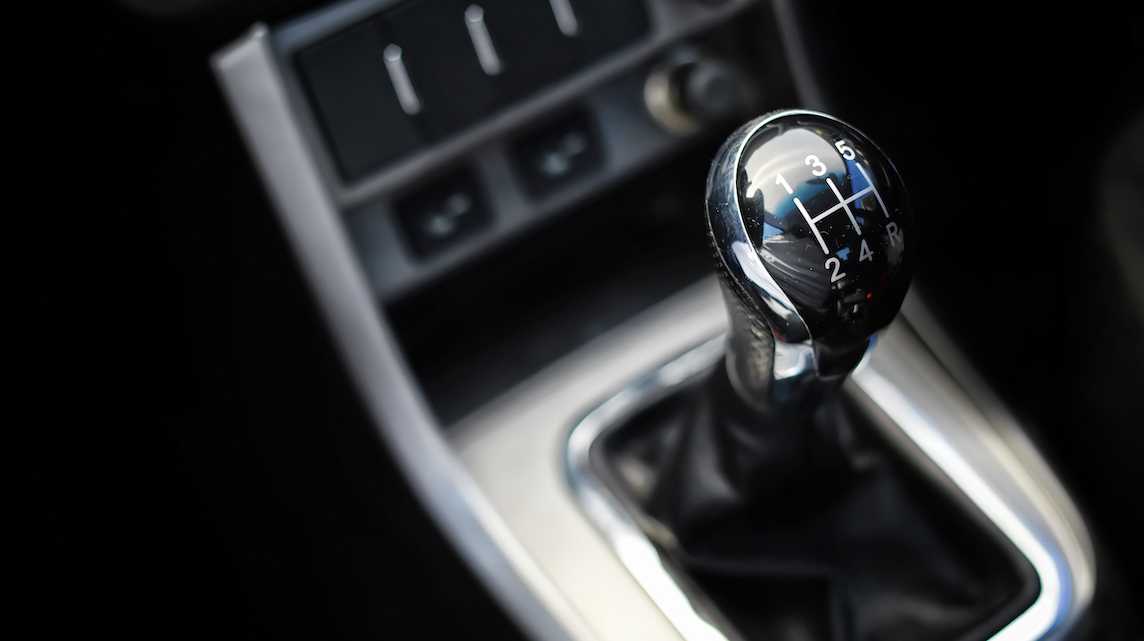
When it comes to horsepower, the 2012 Dodge Charger is a hefty contender. The Hemi-V8 engine, which is nearly as powerful as the street-legal version of its predecessors, is now more refined and civilized. It has a displacement engine of 5.7liters or 345 cubic inches. The car also has a 120.2-inch base and a length measuring 199.9inches.
Standard 292-horsepower Pentastar V6
The Dodge Charger is five-seat sedan. It has all the features of a muscle car, but it is still a comfortable and spacious vehicle. The standard engine of the Dodge Charger is a 3.6L Pentastar V6 delivering 292 horsepower & 260 pound-feet. It achieves 31 mpg highway with its eight-speed automatic transmission. The Dodge Charger is also very efficient, thanks to its fuel-saving mechanism, which deactivates four cylinders when there is no load.
A Pentastar V6 3.6-liter engine is paired in the Charger with a TorqueFlite Eight-Speed Automatic Transmission for smooth, refined driving. The standard power output of the car is sufficient to take it from zero to sixty mph within 6.5 seconds. It can also reach speeds up to 154 MPH in just five seconds. The Dodge Charger's standard Pentastar V6 is 292-horsepower, which is a 62 per cent increase on the base 2.7-liter model.

SRT8's 395-horsepower Pentastar V6
The Dodge Charger is a full-size sedan with a choice of three powerful engines: a base 3.6-liter Pentastar V6 with 275 horsepower and 260 pound-feet of torque, a 5.7-liter HEMI V8 with 370 horsepower and 395 lb-ft of torque, and a supercharged version with 410 horsepower and 450 lb-ft of torque. All Chargers have all-wheel-drive as standard, but the SRT8 lacks an AWD system.
In 2005, the Dodge Charger SRT8 was introduced. Later, the engine became the foundation for the Corvette Super Bee. Although the SRT8 is a modified Charger, it does not have a V8 in its engine bay. This is a shame, as a Charger SRT8 is a surprisingly powerful car - it can compete with a Corvette in a straight line.
R/T Road & Track's 460-horsepower Pentastar V6
The 2012 Dodge Charger can be purchased in SE, SXT or R/T trims. The two most powerful engines in the Dodge Charger are the 3.6L Pentastar V6 or the 5.7L HEMI V8. Dodge's Pentastar V6 V6 is a powerful V6 engine that produces 292 horsepower. It also generates 260 lb/ft of torque. Both engines are efficient, with the Pentastar V6 producing up to 31 highway mpg.
The Dodge Charger was produced from 1966 to 1978, and it was discontinued in 1983. It was produced again in 1987. After being discontinued, the car was put up for sale for two years. It was finally revived in 2006. This Charger's second generation comes with the Pentastar engine. The 2012 Charger R/T Road & Track has been completely redesigned for the 2011 model year.

R/T Max's 480-horsepower Pentastar V6
Dodge introduced an eight-speed auto transmission for their Dodge Charger in 2012. This improves both performance and highway fuel consumption. The Charger also featured Beats by Dr. Dre stereo system and better navigation. But what is the best part about the Charger model? These are the top reasons why you should consider buying a Charger. This vehicle is the perfect fit for a family.
The Dodge Charger's redesigned exterior and interior have been updated to give it a more contemporary look and feel. The base model has the Chrysler Pentastar V-6 with 292 horsepower. HEMI-powered models were also upgraded, and the top SRT8 model received a 6.4-liter Pentastar V8 with 470 horsepower. Garmin navigation systems and WiFi were upgraded to the car. Assistive driver systems like blind spot monitoring and active cruise control are also available.
FAQ
What length of an automotive course is it?
An automotive course lasts 3 years.
The first year is spent on theory, learning all about cars. Practical training is the second year. You will learn to drive, fix engines and perform other tasks around the car. The final year is spent doing a placement at a local garage, which gives you experience in fixing real-world problems.
What qualifications are required to become a mechanic
A series of exams is necessary to become a mechanic. These include:
-
A general knowledge test
-
A practical exam
-
An apprenticeship test
These tests are designed for you to understand the basic concepts and principles of mechanics before your start as a technician.
Once you pass these tests you can become a mechanic. However, you'll still need to complete an apprenticeship. This will involve trade training.
To learn all there is to know about fixing vehicles, you will need workshops and classes. Additionally, you will need to work with experienced mechanics.
A mechanic must be highly focused and attentive to detail in order to succeed. Repairs to vehicles require you to pay attention to every detail.
To become a successful mechanic you'll need patience. If you don’t love to follow instructions, this may not the right career path.
If you enjoy cars and fixing them, this job could be a good fit for you.
What are the requirements for an automobile technician?
You need to have high school diploma or GED and good grades in English as well as maths. Additionally, you will need to be proficient in reading and writing. You will need to pass a written test and then go through a series of practical exams before being allowed to start work.
Is it worthwhile to become a mechanic?
The answer to this question depends on what you want from life if you are looking for money, then yes, but if you're looking for meaning and purpose, then no.
It's not worth learning mechanics if you don’t have the skills. You'll waste your time. It won't make you wealthy. It won't make you famous. It is unlikely that you will be made famous.
This would require you to spend many years learning how to properly do everything. You would still need to hire someone to fix your car if it breaks down. This is why most people don’t bother. They find something they enjoy instead.
You can make a lot of money if you are looking to do well. You can't live a meaningful existence if your goal is to make a living in the mechanic's business.
How long is an automotive mechanic apprenticeship
An automotive mechanic apprenticeship takes around three years to complete. It includes two years of school and two years as an apprentice. The first year is dedicated to learning the theory and practical skills of the trade. You'll also learn the safe and efficient use of tools during this first year. After the completion of the first year, you will spend another year on the job training. Here you'll gain valuable experience in different trades. You'll have the opportunity to attend formal courses during these periods too.
The last year of your program will be spent earning qualifications and becoming certified. These include NVQs, which are obtained after passing industry-specific exams. The HNCs (Higher National Certificates), on the other hand, cover general subjects like customer service and management. City & Guilds certificates can be obtained for individuals who want to learn certain trades.
Is being a mechanic apprentice hard?
It is not easy but it can be done quickly. There are many opportunities for advancement.
You need to have patience and perseverance. Also, you must know how to fix trucks, cars, and motorcycles.
Customers and family members will put pressure on your shoulders to help you succeed. But, you shouldn’t be pressured to make any decisions you aren’t happy with.
This could be an excellent career choice for someone who enjoys fixing cars. It's a job where you can earn a decent salary and build up your business.
You might choose to take a different route. You might consider becoming a technician in this instance.
This involves using your technical expertise to support other workers. Technical support could include helping technicians to troubleshoot issues or teaching them new techniques.
Another option is to become a service advisor. This is where you can offer advice and assistance to customers who bring their vehicles to a garage.
Your decision will be based on what your priorities are. There are many options to choose from, and it is up to you which one suits you the best.
What is the average time it takes to become a mechanic?
To become a skilled mechanic, you need years of experience and practice. You can learn the most effective way to fix cars by learning from a professional mechanic.
You will have to spend time in a garage learning about cars and mechanics. You will need to be familiar with mechanical engineering books about mechanics, car design, and other topics.
And you'll also need to attend auto school.
The most important thing to do is start early. You don't have to wait until you are older to start studying automotive technology. You can get certified as a mechanic by getting started right away!
Statistics
- There were 749,900 jobs available for automotive service technicians and mechanics in 2016, which is expected to grow by six percent through 2026. (jobhero.com)
- The U.S. Bureau of Labor Statistics (BLS) reports that the job outlook for automotive service technicians and mechanics is expected to decline by 4% from 2019 to 2029. (indeed.com)
- According to the BLS, the median annual salary for automotive service technicians and mechanics in the United States was $44,050 in May 2020. (uti.edu)
External Links
How To
How to diagnose your vehicle properly for repair
You should first examine the symptoms your car is showing to determine if it requires repairs. Next, you can follow these steps in order to diagnose your car.
-
Check engine lights. The dashboard light indicators, including the engine light, oil pressure gauge, battery light indicator, coolant temperature gauge and RPM gauge, should be checked. If any of these indicators have been flashing continuously for several days it could mean that there is something wrong with your vehicle.
-
Check the treads of your tires. Tires that are worn can cause issues with handling and braking. The treads of the wheels should be inspected as well. They should be smooth and clean. To do this, remove the wheels and take them out. Check the tread condition with a flashlight.
-
Pay attention to the level of your brake fluid. Keep track of the brake fluid level in your vehicle. This will ensure that your brakes run smoothly. Low brake fluid levels can cause brake failure when you apply pressure.
-
You should test the suspension system. Vehicles usually have a suspension system that helps absorb shocks and vibrations while driving. It improves control and allows for smoother accelerations or decelerations. Your vehicle might feel wobbly, or shake uncontrollably if it has a bad suspension. To determine whether your vehicle may have a suspension issue, you can try to put weight on the rear or front axle and watch the movement.
-
Take a look at the steering column. The steering columns are what connect the steering knob to the rest. Steering columns can be damaged by accidents. It is recommended to replace any steering column that feels loose, or shakey.
-
Pay close attention to the exhaust tube. Exhaust pipes help move gases from the combustion chamber to the atmosphere. Exhaust pipes that are cracked or leaking can allow harmful fumes to enter your cabin. If your tailpipe bends, it is important to fix it immediately.
-
Check under the hood. Check under your hood for any unusual or missing components. Your engine could be leaking fluids. A professional technician should be contacted if your engine compartment emits an unusual smell.
-
It is important to inspect the air filter. The outside environment can collect dust and other debris in your vehicle's air filters. Dirty air filters can cause your vehicle to run poorly. Replace your air filter regularly.
-
Check the fan belt. The fan belt that connects your vehicle to the transmission is called the engine fan belt. If the fan belt fails, the engine won't start. Replacing the belt is simple. All you need are a screwdriver & pliers.
-
Verify the radiator hoses. The radiator hose transports water from radiator to engine. If it becomes cracked or damaged, it can leak hot liquid onto the engine. Repairing the hose is easy with a pair of needlenose pliers or a small wire brush.
-
Check the windshield wipers. Windshield wipers use electricity to clean away snow and rain. If they stop working, they could leave streaks on your window glass. You can fix the problem by changing the washer fluid.
-
Verify the condition of your battery cables. The battery cables supply power to your car's electrical systems. If you are replacing batteries, disconnect the negative cord first. Failure to do so can damage your alternator.
-
Be sure to check your headlights. Headlights help you see the road ahead. It can lead to poor visibility if they aren't working properly. Inspect the bulbs for signs of burnt out.
-
Be sure to check the lights. If you approach other drivers at night, lights will warn them. If one doesn't work, it could distract you and lead to an accident.
-
You should inspect your brakes. Brakes will reduce the speed of your car in case of an accident. You may lose control of your vehicle and crash if the brakes don't function properly.
-
Change your oil. Your engine will stay lubricated by the oil. It prevents metal parts from rusting too quickly. It is recommended that the oil be changed every other month.